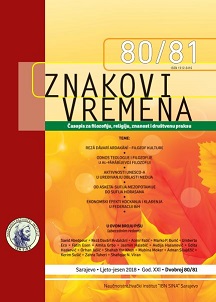Shakespeare and Persia
Shakespeare and Persia
Author(s): Shahab Yar KhanSubject(s): History of Philosophy, Epistemology, Existentialism, Philosophy of Language
Published by: Naučnoistraživački institut »Ibn Sina«
Keywords: Hikmat al Ishraq; Illuminationism; Ibn Arabi; William Shakespeare; Sherley Brothers; Nizami; Haft Peker; The Tempest;
Summary/Abstract: Order in universe is not sequential but consequential reality. We use our contemporary knowledge to try to understand the composite value of this order but sometimes intuition goes beyond knowledge and those with more developed sense of it find a clear meaning just by indicating the (set of) form of event shaping a ‘consequence’. When they give expression to their ‘vision’, they include many cases. Great poets like Shakespeare and Goethe, in words of Mohammad Iqbal, ‘rethink the thought of Divine Creation’. Shakespeare’s spiritual context, his spiritual heritage connects him directly to Ibn Arabi and philosophically to the Illuminationist tradition (Hikmat al Ishraq). Shakespeare’s concepts of statehood, womanhood, education of Self, Godhood, transformation of twoness to One-ness and Nature as first Principle of Diversity throughout his career especially from 1599 to 1611 echo Illuminationist disciplines. Shakespeare’s interest in and knowledge of contemporary Persia is the prime focus of this study. It attempts to place Shakespeare’s knowledge into its historical context. In this regard the Earl of Essex and the Sherley brothers, play prominent roles. It is certain that during this era of English collaboration with Persia and through the personal contact with Sherley’s literary influences traveled to and from. Robert Sherley, as I found out during my academic visit to Isfahan in 2015, was among the favoured disciples of Mulla Sadra, the most influential master of philosophy and sciences of his age. Illuminationist model of thought definitely reached Shakespeare and his drama took a serious structural and thematic bend towards it. In another study done in 2010, resemblances between Shakespeare’s The Tempest and Haft Peker of Nizami Ganjawi (1141–1209) are brought to light.
Journal: Znakovi vremena - Časopis za filozofiju, religiju, znanost i društvenu praksu
- Issue Year: XXI/2018
- Issue No: 80/81
- Page Range: 253-265
- Page Count: 13
- Language: English

